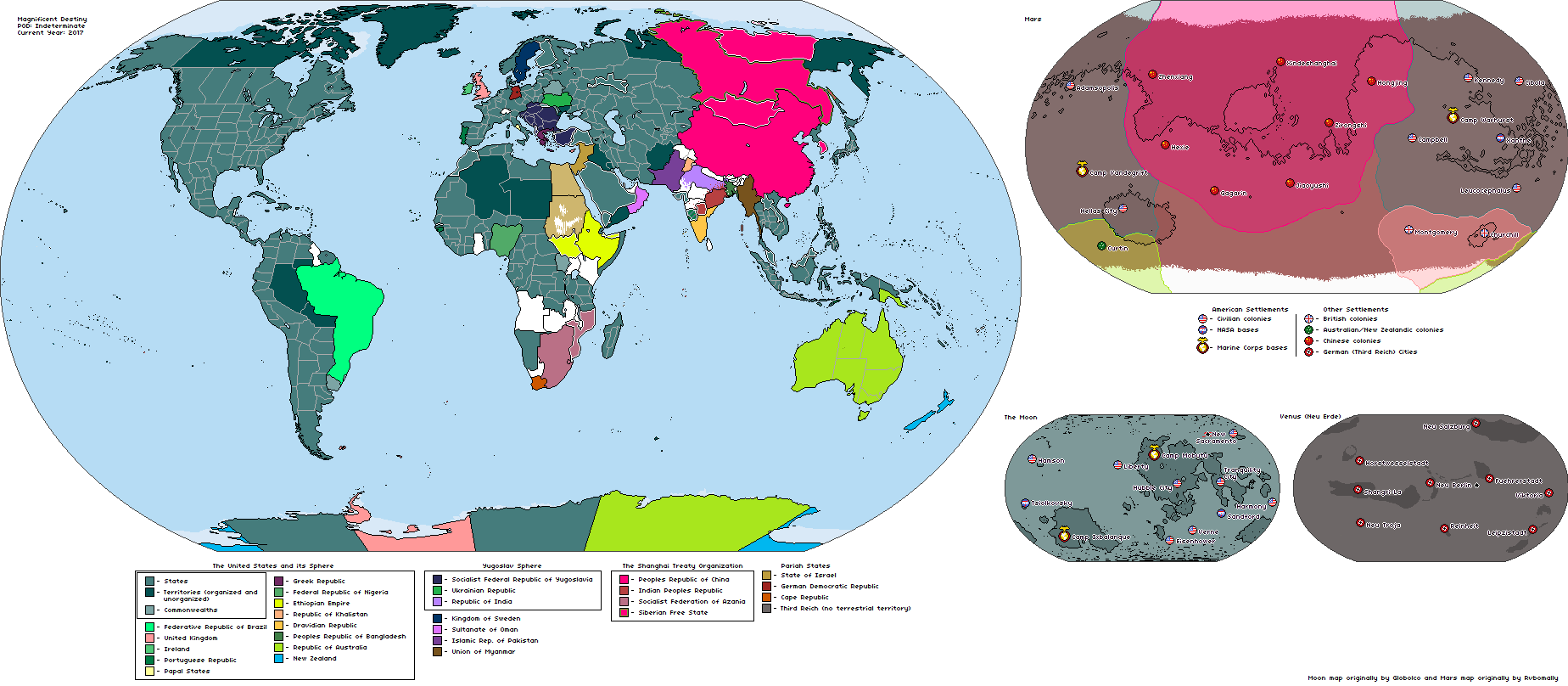I've been working on a map of a USwank world. I have a map, and an excel spreadsheet with the populations of each of the states, territories, and commonwealths of this hypothetical world.
I intend to do a lot with this universe, and next on my list is deciding the size of each state's congressional delegation (so I can determine partisan control of the alternate Congress and work out Presidential elections).
I am more or less satisfied with the map and spreadsheet (maybe a few minor reworkings and population movement), but have 375 states, and a total population somewhere in the neighborhood of 2.5 billion. I have been planning to keep congressional delegations from the OTL US the same size (for my ease, actually). However, my calculations show that if we use the size of the average Congressional district IOTL (roughly 710,000), we end up with 3,488 Congressmen. That is even larger than OTL China, and seems unwieldy! This brings me to a question: does a House of Representatives of that size make sense? Is it too large, or does the fact TTLs USA is something of a world government make it a reasonable proposition?
Second, is there any really easy way to determine apportionment with a spreadsheet? I'd rather not use the formulas online for every one of 380 separate states.
Alternatively, I've considered just handwaving the issue of using an algorithm by having a constitutional amendment passed saying that each x number of people get a single representative. Does this sound plausible?
Any help or input you can give is appreciated!
Here is a copy of the map, if that helps!

I intend to do a lot with this universe, and next on my list is deciding the size of each state's congressional delegation (so I can determine partisan control of the alternate Congress and work out Presidential elections).
I am more or less satisfied with the map and spreadsheet (maybe a few minor reworkings and population movement), but have 375 states, and a total population somewhere in the neighborhood of 2.5 billion. I have been planning to keep congressional delegations from the OTL US the same size (for my ease, actually). However, my calculations show that if we use the size of the average Congressional district IOTL (roughly 710,000), we end up with 3,488 Congressmen. That is even larger than OTL China, and seems unwieldy! This brings me to a question: does a House of Representatives of that size make sense? Is it too large, or does the fact TTLs USA is something of a world government make it a reasonable proposition?
Second, is there any really easy way to determine apportionment with a spreadsheet? I'd rather not use the formulas online for every one of 380 separate states.
Alternatively, I've considered just handwaving the issue of using an algorithm by having a constitutional amendment passed saying that each x number of people get a single representative. Does this sound plausible?
Any help or input you can give is appreciated!
Here is a copy of the map, if that helps!

Last edited: